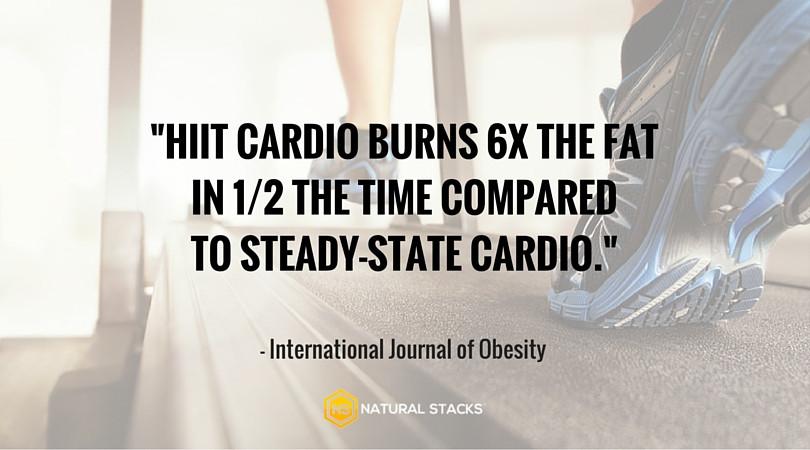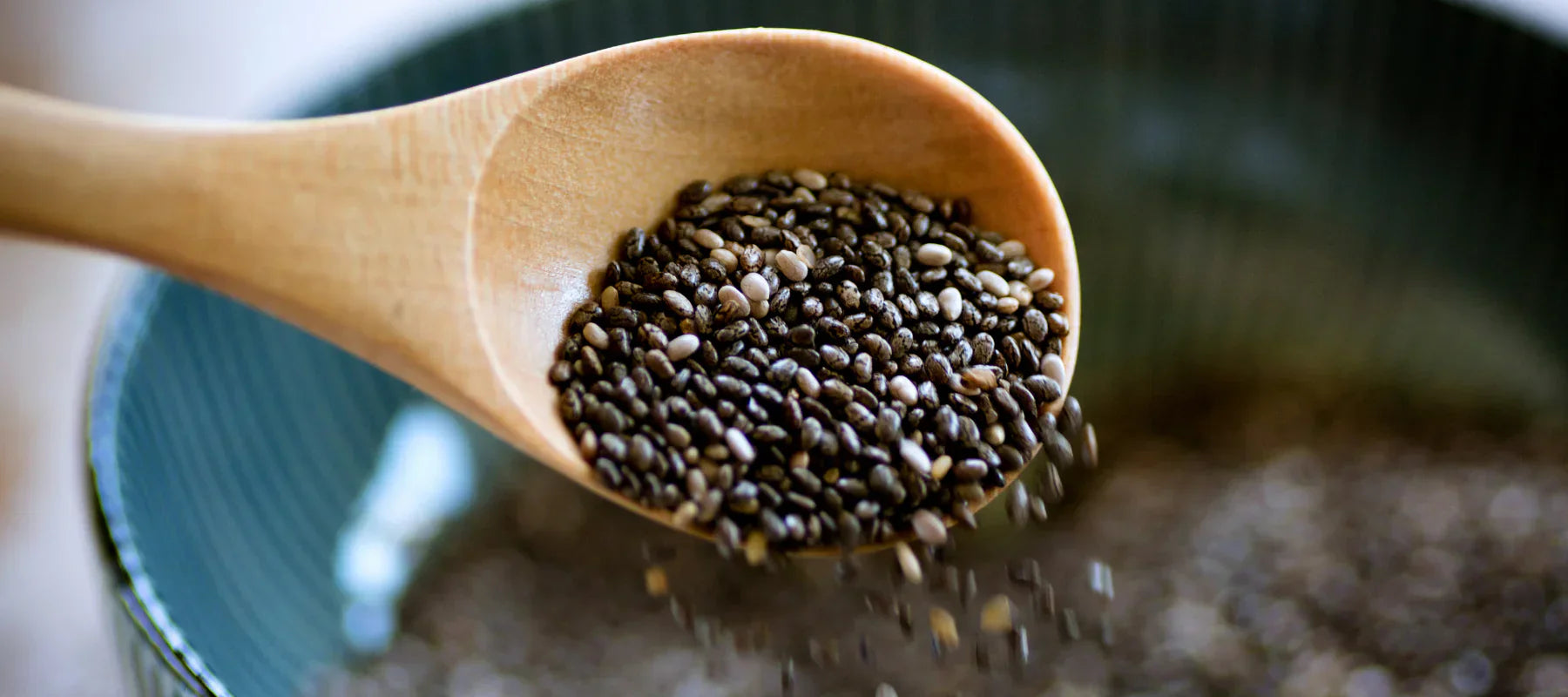What's The Best Cardio: Steady-State or HIIT?


So you want to do some cardio and lose unwanted body fat - but you're not sure how to do it.
There's a lot of opinion and debate over what method is best for fat loss: steady-state cardio (low intensity and longer duration) or high intensity interval training - shorter sessions and higher exertion levels.
Let's see what the science says.
Everything In Life Is "Goal-Dependent"
Before we can answer HOW to do something, we must first answer WHY we're doing it.
There are always multiple ways to accomplish any task - whether we're talking business, diet, fat loss, strength training, memorization techniques or checkers.
To avoid a massive tangent and to stay on topic, I'll be brief and blunt.
"Cardio" is not the best way to lose fat/build muscle/build the body most people want.
If you enjoy running, run. If you enjoy biking, bike. If you prefer swimming, do what you enjoy.
This article is examining the effectiveness of the tools in our fitness tool box at accomplishing one goal - reducing unwanted body fat.
(Let's face it, body fat is the only reason the word 'calorie' means anything to anyone.)
Always remember this: Form follows function.
The health status, performance abilities, and appearance of our bodies reflect the tasks we repeatedly ask our bodies to perform.
More on this coming up - with scientific studies as always!
DISCLAIMER: Calories Burned, n=1, and Effort
Individual results, calories burned, and perceived effort all vary from one individual to the next. We will all experience our own truths when we apply these strategies - such is the nature of the n=1 experimentation.
This is meant to serve as guideline for you - a jumping off point, so to speak - to provide you a shortcut and eliminate some of the headaches of trial and error when looking for the best fat loss protocols for your fitness routine.
Let's look at an example... a 400 pound man will burn more calories walking up 20 flights of stairs than a 100 pound female walking right beside him.
So the individual performing the exercise introduces variability into the calories burned as does the pace of the individual.
Just look at the large range of calories burned per hour at various speeds on a treadmill: (Same person, same treadmill, different speeds & inclines.)
- 3mph WALK = 219 calories/hour
- 3mph WALK = 518 calories/hour **3.5 Incline**
- 6mph JOG = 687 calories/hour
- 8mph RUN = 897 calories/hour
As further evidence that gender, weight and pace introduce variables in calories burned, the Wisconsin Department of Health published a guide that shows running can burn anywhere from 472-1553 calories per hour - obviously depending on gender, bodyweight and speed. [W]
Bottom line: higher exertion levels result in greater energy expenditure, and ultimately more fat loss for the duration of effort.

Energy systems - steady state vs. HIIT - performance training or fat loss
Again, I feel compelled to to repeat this - If you LIKE running or if running IS YOUR SPORT, then by all means, keep it up.
However, if running is a means to an end (less body fat, better health, etc) then you need to listen up!
Running or steady-state cardio is NOT the best way to lose body fat. In fact, it has been shown to INCREASE body fat!
- Study 1 – Laval University (Canada)…1 group performed steady state cardio for 20 weeks while another group performed HIIT for 15 weeks. The steady state group burned an astonishing 15,000 MORE calories than their HIIT counterparts…yet the HIIT group lost significantly more bodyfat!
- Study 2 – 2001, East Tennessee State University…an 8-week study following HIIT vs. steady state cardio found that the HIIT group lost 2% body fat in 8 weeks while the steady state group lost ZERO body fat.
-
Study 3 -This Australian study published in the International Journey Of Obesity split 2 groups of women into steady state (40 minutes at 60% Max heart rate) and HIIT groups (20 minutes of 8 second sprints with 12 second rest periods). Yet again, the fat loss winner was HIIT…1/2 the time and 6X the body fat lost in this study!
- The women in the steady-state exercise group actually saw an increase in trunk body fat %.

-
Study 4 –46 overweight, college-age males completed the same 8 sec sprints with 12 seconds recovery for 20 minute sessions that the Australian women completed in the previous study. After 12 weeks, the HIIT group lost 1.5kg on the scale and 2.0kg of fat - that means they gained muscle and lost body fat at the same time! The control group saw zero change weight or body fat.
- Interestingly the waist circumference of the HIIT group DECREASED an average of 4cm, while the waist measurement of the control group INCREASED by an average of 2cm.
- Study 5 - A 9-year study of 12,568 runners concluded in 2006 and showed that over half of the runners GAINED body fat and increased waist circumference size over the 9 years – even if they never quit running. In fact runners who maintained or slightly increased their mileage still gained body fat. The only runners who did not gain fat were the ones who tripled their weekly mileage over the 9 years.
Summary: What YOU need to know

EVERYTHING IS GOAL DEPENDENT. WHY are you doing it?
- If you're simply doing "cardio" for fat loss, keeping it short and going as hard as you can results in more fat lost compared to lower or moderate intensity efforts. If you can last longer than 20 minutes, you’re not going hard enough – and you’re not doing HIIT.
- Don't worry about "IDEAL" or being "fast enough" when performing intervals. Start with the highest sustainable output level for YOUR CURRENT fitness level and do what you can. Over time, focus on going faster/harder and then seek to increase duration to 10, 15, even 20 minutes. Focus on progress, not perfection.
- Longer duration, lower intensity cardio DOES have it's place in a balanced health and fitness plan.
- If you're training for an event, running, rowing or biking for performance or pleasure, do what you enjoy.
- Obviously the diet consumed by everyone in these studies is a crucial factor in the fat lost or gained over time. The researchers in these studies may not have controlled that - but we're not examining diets here, we're examining methods of cardio for fat loss. As was shown here, regardless of dietary changes, these HIIT methods can reduce body fat.
Sample Workout:

In PART II, we'll examine the best cardio machines!
Resources:
- Tremblay, A. Impact of exercise intensity on body fatness and skeletal muscle metabolism. Metabolism. 1994 Jul;43(7):814-8.
- King, Jeffrey Warren, "A Comparison of the Effects of Interval Training vs. Continuous Training on Weight Loss and Body Composition in Obese Pre-Menopausal Women." (2001). Electronic Theses and Dissertations. Paper 123. http://dc.etsu.edu/etd/123
- Trapp EG, et al. The effects of high-intensity intermittent exercise training on fat loss and fasting insulin levels of young women. International Journal of Obesity, 2008; 32: 684–691.
- Heydari M, et al. The Effect of High-Intensity Intermittent Exercise on Body Composition of Overweight Young Males. Journal of Obesity, 2012. doi:10.1155/2012/480467
- Williams, P. Wood, P. The effects of changing exercise levels on weight and age-related weight gain. International Journal of Obesity (2006) 30, 543–551. doi:10.1038/sj.ijo.0803172










